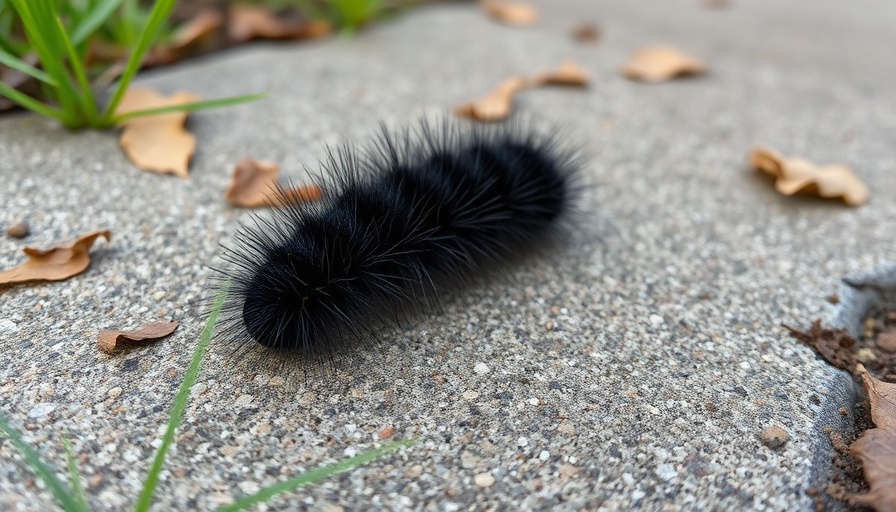
Fuzzy Black Caterpillars: A Curious Urban Intruder
As residents of Houston step outside to enjoy the warm weather, they've noticed an unusual inhabitant creeping into their surroundings—the fuzzy black caterpillar. While these creatures are drawing attention for their unique appearance, it’s essential to understand their role in the ecosystem and what they mean for those who encounter them. Experts emphasize that although the sight might raise some eyebrows, these caterpillars are completely harmless to humans.
What You Should Know About Their Presence
According to entomologists, the fuzzy black caterpillars that have been spotted across the city are most likely the larval stage of the Arizona Tussock Moth. Their presence signifies a typical seasonal pattern, where warmer temperatures stimulate their activity as they prepare to metamorphose into moths. Houston’s subtropical climate provides an ideal environment for these fascinating, albeit fuzzy, visitors.
Myths and Facts: Debunking Common Misconceptions
With any unusual sighting in nature comes a wave of myths and misconceptions. Some residents worry that these caterpillars could be dangerous, but this fear is unfounded. Experts clarify that while they might look intimidating with their hair-like bristles, these caterpillars are not venomous and do not pose any health threats. It's mainly the hairs that can cause mild irritation if touched, similar to dealing with a thornbush. Providing accurate information is crucial in alleviating any community concerns about the fuzzy visitors.
The Importance of Caterpillars in Our Ecosystem
Caterpillars play a vital role within their ecosystems, often serving as a food source for various birds and other wildlife. Their dietary habits, focusing on leaves from a variety of plants, contribute to the nutrient cycle. By understanding their ecological function, residents can appreciate the presence of these caterpillars rather than view them as a nuisance. Educating the public on these aspects benefits conservation efforts and promotes coexistence with local wildlife.
How to Handle Caterpillar Encounters
If you find yourself up close and personal with one of these fuzzy black caterpillars, the best approach is to observe rather than disturb. When threatened, these caterpillars might curl up or drop to the ground, mimicking the appearance of dead leaves as a defense mechanism. This behavior is a fascinating example of nature's protective strategies. If you wish to move them, gently pick them up with a stick or let them be—no harm will come from leaving them alone.
The Future of Fuzzy Black Caterpillars in Houston
As climate change continues to affect ecosystems globally, scientists are monitoring how such changes impact local wildlife, including caterpillar populations. Possible shifts in seasonal behaviors are a topic of ongoing study within entomological circles. Houston’s residents should remain mindful of these changes and how they could reframe interactions with nature in the upcoming years. Awareness of environmental changes can help create more robust community engagement in conservation efforts.
Community Engagement and Education
Local schools and community groups can play crucial roles in educating the public about these caterpillars and the broader implications of biodiversity. Initiatives such as nature walks led by entomologists can provide residents with first-hand experiences that deepen their understanding of local ecosystems. By fostering connections between residents and their environment, Houston can maintain a culture that values nature and its inhabitants, however fuzzy they may be.
As these caterpillars continue their journey through our city, learning about them can transform curiosity into appreciation. The next time you encounter a fuzzy black caterpillar, remember there's more to this sight than meets the eye. Together, we can celebrate and protect our local wildlife.
 Add Element
Add Element  Add Row
Add Row 



Write A Comment